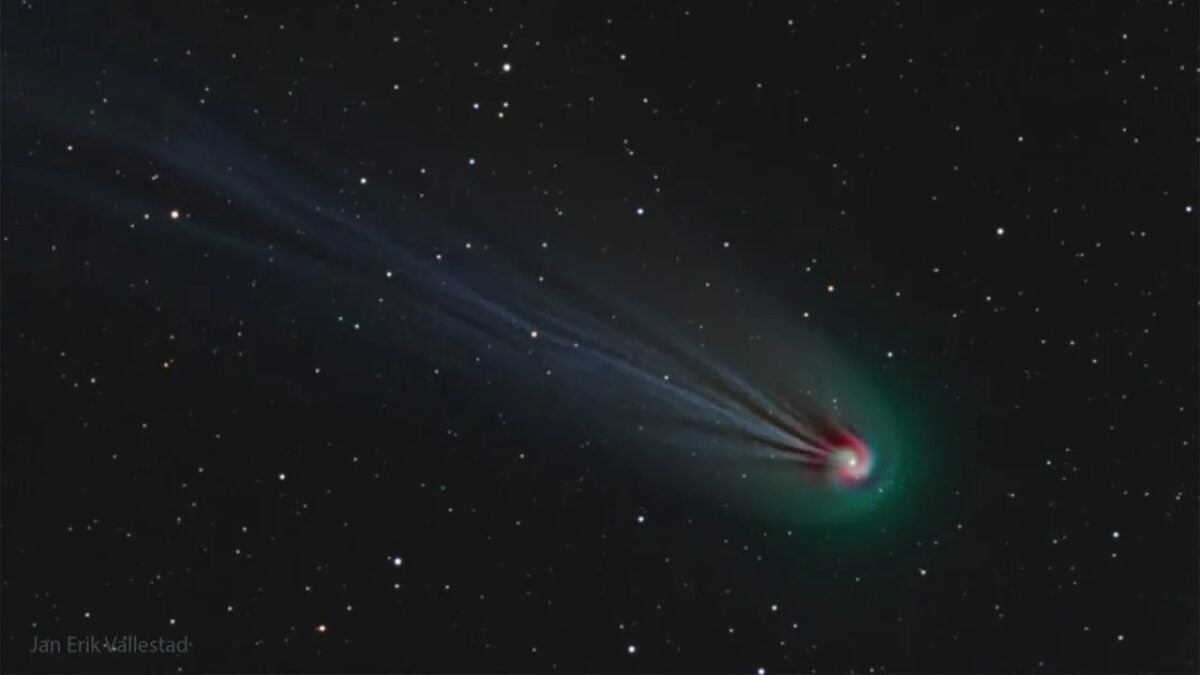News
The “devil’s comet”: what it is and when to see this curious comet erupt
A comet... with eruptions? Yes, it's real and you will be able to see it in April.

- March 19, 2024
- Updated: August 26, 2024 at 6:48 AM

If you are a fan of astronomy, next month you have a date with a “diabolical” comet. The 12P/Pons-Brooks comet has been visible to amateur astronomers during the month of March thanks to a series of eruptions that took place on its surface, before being seen between April 21 and 24.
The comet 12P/Pons-Brooks, also known as the “devil’s comet” thanks to an eruption it had last year that made it look like it had devil horns, only appears in full view once every 71 years. So, for many astronomy enthusiasts, the appearance of the comet this year is a once-in-a-lifetime opportunity.
12P/Pons-Brooks is a comet ciovolcanic or cold volcano that erupts periodically, making it visible on Earth long before it reaches its April perihelion, the moment when its elliptical orbit approaches the Sun. Space.com reports that the comet has had occasional eruptions that skywatchers have been able to capture with their telescopes.

Originally spotted in 1812 by the French astronomer Jean-Lous Pons, the comet returned in 1883 and was documented by the American astronomer William Brooks. At that time, Brooks was unaware that his discovery had already been documented seven decades earlier. The scientific community named the comet Pons-Brooks in honor of both men.
According to NASA, the comet could be visible to the naked eye during next month’s eclipse, but for now, it is best to observe it in the early evening with binoculars or a telescope, in the constellation of Pisces.
If you can’t wait until April to see the Pons-Brooks comet, you can try to catch a glimpse of it now. Until the end of the month, skywatchers will likely need a telescope or binoculars to locate it near the western horizon.
Publicist and audiovisual producer in love with social networks. I spend more time thinking about which videogames I will play than playing them.
Latest from Pedro Domínguez
You may also like

Ubisoft announces a collectible card game based on NFTs
Read more

Nintendo may not have enough Switch 2 units for the console's launch
Read more

Love, Death, and Robots returns with a fourth season that is very musical
Read more

The alpha of Marathon leaves mixed feelings due to a very peculiar design decision
Read more

We know all the details about FBC: Firebreak, the new game from the creators of Alan Wake and Control
Read more

Nano 3D printing could reduce chip production costs by 90%
Read more